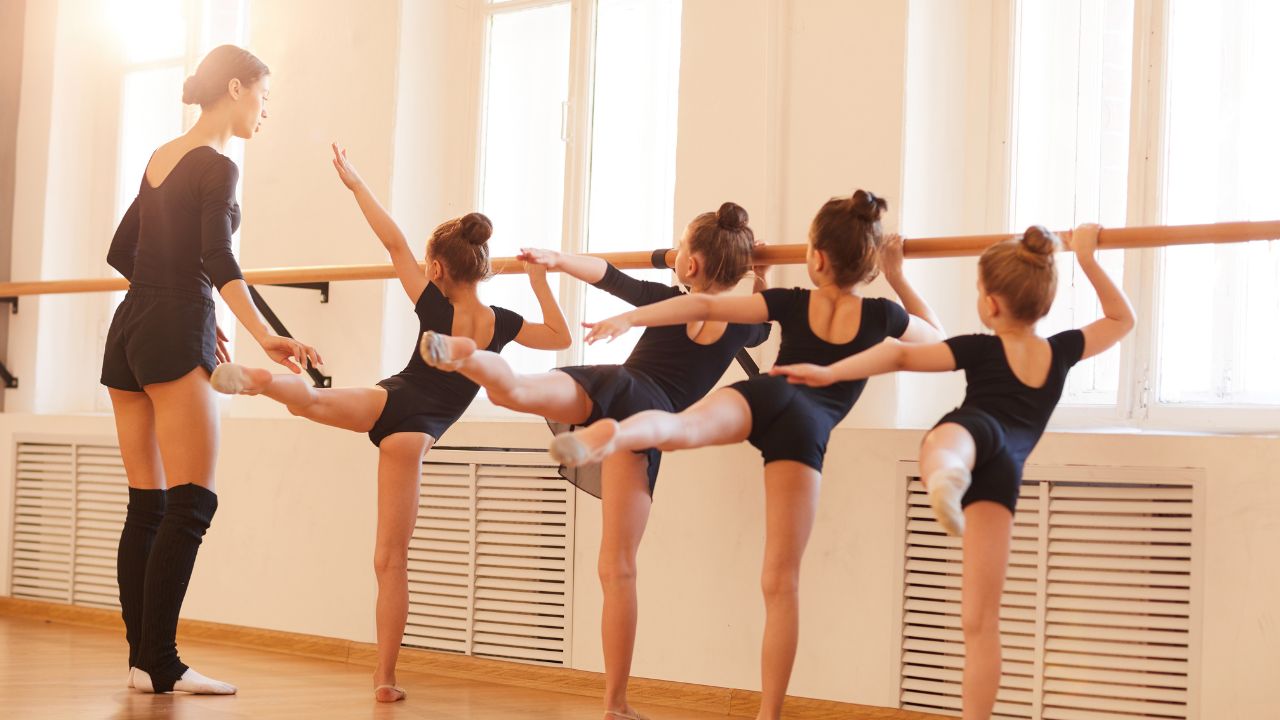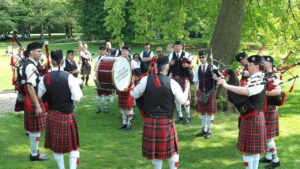Scottish Highland dancing is more than a cultural tradition — it’s a competitive sport with a well-defined structure for dancer progression.
In the United States, the Federation of United States Teachers and Adjudicators (FUSTA) oversees dancer registration and advancement, ensuring that competitors are placed in categories that match their skill and experience.
This guide walks you through the five competition levels — Primary, Beginner, Novice, Intermediate, and Premier — explaining the requirements for moving up, the rules that govern advancement, and what each stage means for your Highland dancing journey.
Why Advancement Rules Exist
The Scottish Official Board of Highland Dancing (SOBHD), through FUSTA in the U.S., ensures dancers compete against others of comparable ability.
This preserves fairness and provides a structured path for growth, allowing beginners to gain confidence before competing at the highest levels.
The Five Competition Levels in Highland Dancing
1. Primary
- For dancers under the age of 7.
- Can remain in this category until their 7th birthday.
- Dancers may advance early to Beginner but cannot return to Primary once they move up.
2. Beginner
- Entry-level category after Primary.
- Remain until achieving six stamps for 1st, 2nd, or 3rd place in either Highland Fling, Sword Dance, Sean Triubhas, Reel, or Special/Trophy Fling.
- Must also meet the 12-month rule — remaining in Beginner for at least one year from the first stamp date.
3. Novice
- Achieved after meeting Beginner promotion criteria.
- Must remain for at least 12 months from first Novice stamp and earn six 1st, 2nd, or 3rd placements in any dance before moving to Intermediate.
4. Intermediate
- Attained after Novice requirements are met.
- Same 12-month rule applies — must earn six qualifying placements in any dance to advance.
5. Premier
- The final and highest level.
- No further advancement — once Premier, you remain Premier for all competitions.
- Only Premier dancers can compete in Championships.
Highland Dance Levels and Advancement Criteria
| Level | Age Range | Promotion Requirements | Return Possible? |
|---|---|---|---|
| Primary | Under 7 | Optional early advancement to Beginner | No |
| Beginner | 7+ | Six stamps in specified dances + 12 months from first stamp | No |
| Novice | Any | Six stamps in any dance + 12 months from first stamp | No |
| Intermediate | Any | Six stamps in any dance + 12 months from first stamp | No |
| Premier | Any | N/A – final level | N/A |
The 12-Month Rule Explained
The 12-month rule ensures dancers have adequate experience in each category before advancing.
Example:
- If a Beginner earns all six qualifying stamps in six months, they still must remain in Beginner for the rest of the 12 months before moving to Novice.
- This prevents rapid jumps in categories that could leave a dancer unprepared for tougher competition.
Early Advancement — Pros and Cons
Advantages
- Opportunity to challenge yourself sooner.
- May accelerate skill development.
Risks
- Once moved up, there is no going back.
- You may face more experienced dancers too early, which could impact confidence.
Keeping Your Old Category Card
Yes, you can keep your old card when you move up — but you must send it to the registrar first for official processing. Some registrars automatically return old cards, others only upon request.
Special Notes on Category Changes
- Mid-Year Advancement: If you advance mid-year, you will not pay an additional upgrade fee.
- Temporary Cards: If you advance without having your new card yet, organizers can issue a temporary card for competition day.
- Multiple Wins: There’s no limit on how many wins you can have in a year before advancing — as long as the 12-month rule is respected.
Tips for Smooth Advancement
- Track your competition stamps carefully to know when you qualify.
- Discuss advancement timing with your teacher to ensure readiness.
- Avoid early advancement unless your technique, stamina, and consistency are solid.
Advancing through Highland dance levels is a balance between skill, timing, and experience.
FUSTA and SOBHD’s progression rules are designed to create fair competition, encourage steady development, and prepare dancers for the rigors of Premier-level Championships.
By understanding the levels and their requirements, you can plan your competitive journey strategically and confidently.
FAQs
Can a Primary dancer move directly to Novice?
No. Dancers must move through each level in order — Primary → Beginner → Novice → Intermediate → Premier.
What happens if I qualify to move up but choose to stay in my current level?
Once you meet both the six-stamp requirement and the 12-month rule, you must advance — you cannot stay in the same category.
Do results from non-SOBHD competitions count toward advancement?
No. Only results from SOBHD-sanctioned competitions count toward your six qualifying stamps.




